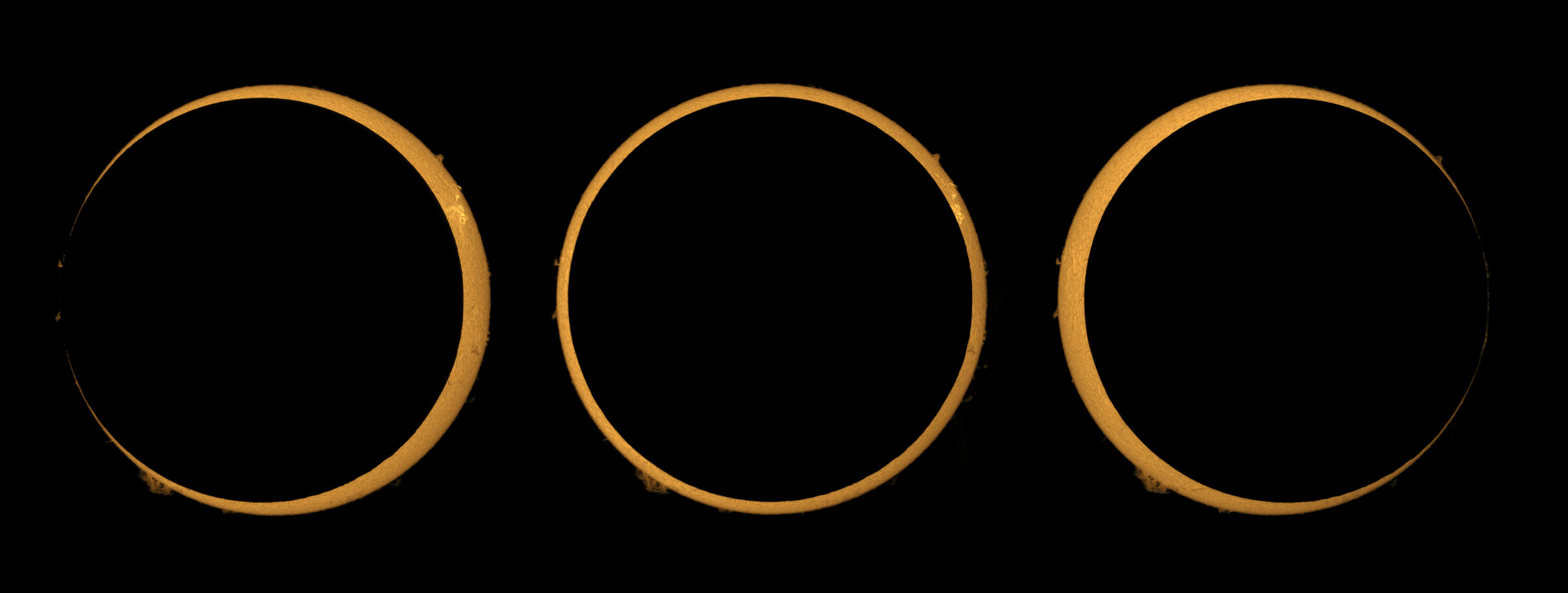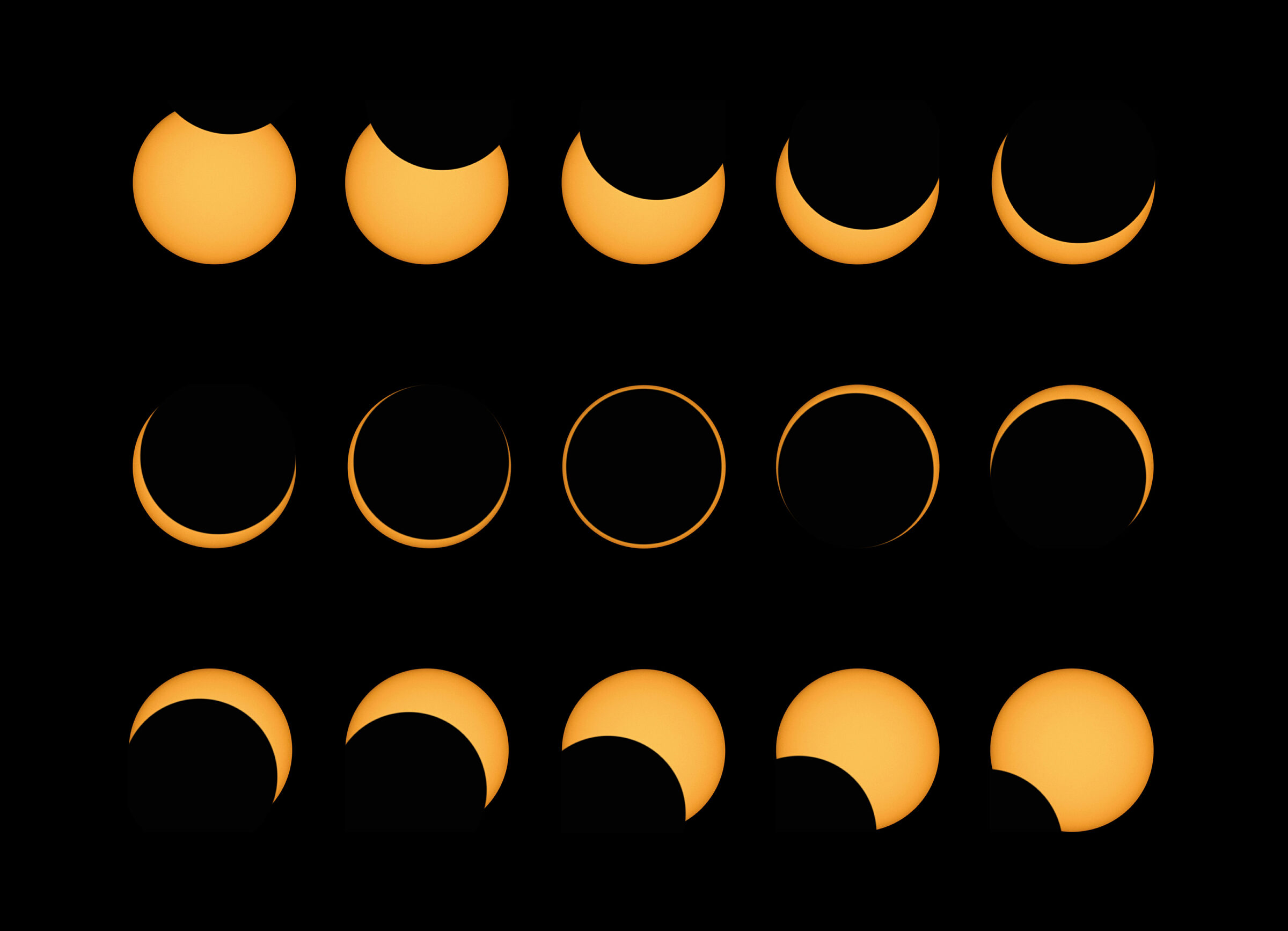Kate Howells • Sep 22, 2023
What is an annular solar eclipse?
How this special total solar eclipse makes a ring of fire around the Moon
Annular eclipses are a very special type of solar eclipse. During an annular eclipse, the Moon is centered in front of the Sun but doesn’t completely obscure it, instead leaving a ring of sunlight visible around the Moon’s edges. This circle of light is called an annulus, or sometimes a “ring of fire.” Annular solar eclipses happen only when the Moon is at the furthest point from Earth in its orbit, making the Moon appear smaller than usual from the Earth’s perspective.

Why do annular eclipses happen?
The Moon’s orbit around the Earth is somewhat elliptical, meaning it is not perfectly circular. This means that the distance between the Earth and the Moon varies throughout the year, making the apparent size of the Moon as seen from Earth vary as well.
Most of the time, the Moon appears large enough to cover the entire Sun during a total solar eclipse. But when the Moon is at its apogee — the point in its orbit farthest from Earth — it appears slightly smaller than the Sun, and cannot cover the Sun completely. When the Moon passes directly in front of the Sun during the Moon’s apogee, it creates an annular eclipse.
What will you see during an annular solar eclipse?
The eclipse begins and ends as a partial eclipse. At the beginning stage, when you look at the Sun (with proper eye protection), you'll notice a small, dark crescent slowly appearing on one side of the Sun, as though a small bite were being taken out of the Sun. As the Moon continues to move, the Sun will start to look more like a crescent shape, and the daylight will start to dim noticeably. Shadows on the ground might start to look sharper and more defined.
Once the Moon becomes centered over the Sun, you’ll see the Sun's outer edges form a bright ring around the dark disk of the Moon. This is often referred to as the "ring of fire," and is technically called the "annulus," which is where the term "annular" eclipse comes from. While this won’t create the same level of darkness you see during a total solar eclipse, the quality of the daylight will be very different from normal daytime, and may take on an eerie quality. You may also notice some of the same phenomena you’d see during a total eclipse, like changes in temperature and animals behaving differently.
The Moon will then continue its journey across the Sun, causing the ring of fire to gradually narrow until the eclipse transitions back into a partial eclipse and then ends.

How long do annular eclipses last?
Annular eclipses are typically longer in duration compared to total eclipses. This is because the Moon's smaller apparent size means that it takes more time for it to move completely across the face of the Sun. Still, the time that the eclipse is truly annular (also called annularity) is short: just a few minutes. Partial eclipses will last as much as two or three hours before and after annularity, as well as in regions around the path of annularity.
How often do annular solar eclipses happen?
Annular eclipses are the rarest kind of solar eclipse. While normal total solar eclipses can happen at any point in the Moon’s orbit around the Earth, annular eclipses only happen when the Moon is around its apogee.
On average, annular eclipses occur somewhere on Earth about every three to five years, but they are not evenly distributed across the planet. Locations closer to the poles, such as the Arctic and Antarctic regions, see annular eclipses more often than locations closer to the equator. This is because the Moon is slightly farther away from the Earth’s poles than from its equatorial regions, making its apparent size in the sky slightly smaller.
What is a hybrid solar eclipse?
Because the Moon’s apparent size changes depending on where you are on Earth, sometimes a single solar eclipse is seen as total in some areas and annular in others. This is called a hybrid solar eclipse.
How to safely watch an annular eclipse
Just like all solar eclipses, it’s essential to use proper eye protection or viewing equipment, such as solar eclipse glasses, when observing an annular eclipse. Even a small portion of the Sun's surface that is not covered by the Moon can be dangerously bright to look at directly.
Support our core enterprises
Your support powers our mission to explore worlds, find life, and defend Earth. You make all the difference when you make a gift. Give today!
Donate

 Explore Worlds
Explore Worlds Find Life
Find Life Defend Earth
Defend Earth

